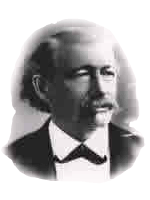History
How it all began....
The grand tradition of Belleair Country Club golf began over a hundred years ago when Henry Bradley Plant, founder of the Plant system of railroads and Steamboats selected this site to construct a winter golf resort in 1897. He had six holes built with elevated greens, the surfaces of which were crushed seashells. Those six holes, no longer in existence, were located on the Club’s West Course in the general area of holes #1, 2 3 and 18. At that time, the fairways were rough with indigenous grass, as it was assumed that sophisticated grasses could not be grown in Florida.
 By 1899, under the guidance of Joseph J. Eldridge, the layout had expanded to nine holes and the greens had been “upgraded” to sand surfaces. On June 23, 1899, Henry Plant died, leaving his son, Morton F. Plant, to complete the dream he had started. Morton Plant succeeded in completing his father’s dream, and more.
By 1899, under the guidance of Joseph J. Eldridge, the layout had expanded to nine holes and the greens had been “upgraded” to sand surfaces. On June 23, 1899, Henry Plant died, leaving his son, Morton F. Plant, to complete the dream he had started. Morton Plant succeeded in completing his father’s dream, and more.
Morton began experimenting with topsoil, grasses and fertilizers, refusing to accept the notion that better golf course grasses could not be grown successfully in Florida. He went so far as to have several railroad cars full of rich Indiana topsoil brought to Belleair. Morton Plant laid the foundation for the rich and lush appearance of the Belleair Country Club’s golf courses as they are today. In fact, it has been observed that the Club’s grass greens were the first in the South.
During 1909, the West Golf Course grew to eighteen holes and by 1915, to thirty-six holes, implementing the design of the popular and brilliant golf course architect, Donald J. Ross. Today’s layouts are essentially as Ross designed them, although the sequence of holes has changed. #4 West was elevated and entirely surrounded by a sand moat, with the putting surface accessible by stepladder. Although the fairways and greens have been sculpted and refined, #4 West remains as it was originally designed by Donald J. Ross, without the use of a stepladder.